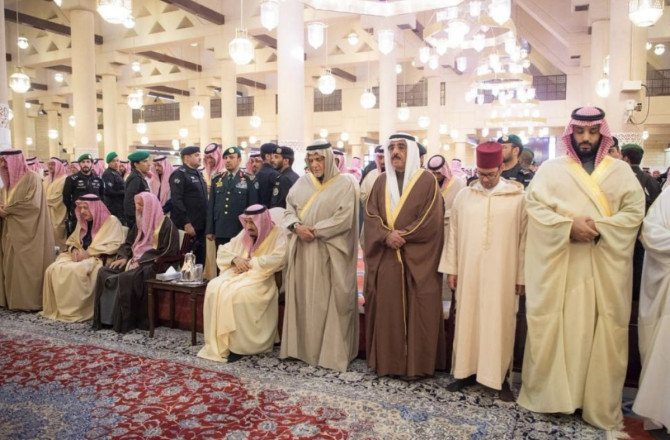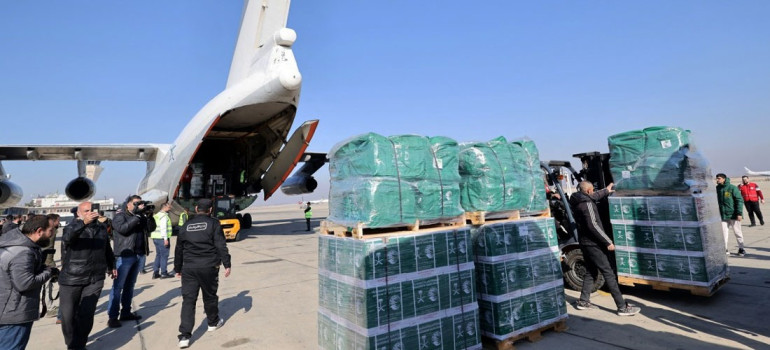The kingdom aims to foster warmer international relations by abandoning the religion officially assigned to the royal family, but is taking steps to-reduce the costs of this rivalry.
Introduction
In recent years, Saudi Crown Prince Mohammed binSalman has launched a series of reforms to weaken the power of Salafis in the kingdom and soften the power of the religious community. The aim is to combat the influence of Salafi extremism and radicalism and to promote a more inclusive approach to Islam that is consistent with universal and societal values.
Today, the connection between some Salafi Teachings and the struggle is becoming more-widely accepted both inside and outside SaudiArabia. By reducing support for Salafism in SaudiArabia, the prince aims to dispel the perception that Saudi Arabia supports terrorist groups. He is also aware of the security risks that some of these groups pose to Saudi Arabia in particular, especially during the 2011 Arab conflict crisis and Islamist movements in the Middle East.
Today, some Salafist connections to this struggle-are gaining ground in Saudi Arabia and abroad. By reducing support for Saudi Salafism, the prince wants to counter the perception that Saudi Arabia Supports extremist groups. He is also aware of the security risks that some of these groups pose toSaudi Arabia, especially during the 2011 Arab crisis and Islamist attacks in the Middle East.
Saudi Arabia's Support for Salafism
The state of Saudi Arabia was founded in 1727 and was later joined by Muslim scholar Muhammad binAbdul-Wahhab. This has led to Saudi Arabia being referred to simply as the "Wahhabi state". What Salafi and Wahhabis have in common is that both tend to return to the early practices of Islam; the main difference is their reliance on the Quran and Hadith, traditional rules and the words of the prophet Muhammad. However, Salafism and Wahhabism differ in their origins, scope and practices .
Salafism is a movement that seeks to follow the previous generation of Muslims and rejects new developments such as silent people into political activism. Wahhabism is a more traditional Salafi religion that strictly enforces Islamic law and follows the Hanbali school of law.
There are two main reasons for Saudi Arabia's Support for Salafism in recent years. Just asSalafism is the basis of religious law at home, it has also become the basis of religious law abroad. It has also been used against the kingdom’s enemies.Between 1982 and 2005, the kingdom invested heavily in promoting Salafism worldwide, especially during the reign of King Fahd. This makes Salafism And its efforts to create a global Salafist network an important tool of Saudi Arabia’s power, especially inMuslim countries where the kingdom has established madrassas and mosques, provided scholarships , and published literature supporting Salafi. The storm following the 1973 oil boom allowed Saudi Arabia to spread its influence in particular interpretation of Islam against other ideologies , such as Arab nationalism, Shia Islam after the 1979 Islamic revolution in Iran, and even more extreme interpretations of Sunni Islam.
There are two main reasons for Saudi Arabia's Support for Salafism in recent years. Just asSalafism is the basis of religious law at home, it has also become the basis of religious law abroad. It has also been used against the kingdom’s enemies.Between 1982 and 2005, the kingdom invested heavily in promoting Salafism worldwide, especially during the reign of King Fahd. This makes Salafism And its efforts to create a global Salafist network an important tool of Saudi Arabia’s power, especially in Muslim countries where the kingdom has established madrassas and mosques, provided scholarships , and published literature supporting Salafi. The storm following the 1973 oil boom allowed Saudi Arabia to spread its influence in particular interpretation of Islam against other ideologies , such as Arab nationalism, Shia Islam after the 1979 Islamic revolution in Iran, and even more extreme interpretations of Sunni Islam.
For example, the Islamic University of Medina,founded in 1961, plays a major role in teaching Islam And Arabic to foreign students. Many of its graduates return home to spread the Islam they have learned . A good example for students in SoutheastAsia is Anis Matta, former speaker of the IndonesianHouse of Representatives and a prominent figure in the Welfare Justice Party. Although the party supports basic Islamic principles, its political views are Salafi-influenced. Other examples of Saudi Influence include funding religious schools such as the Islamic Science University of Malaysia, which propagates Salafi ideas. The same can be said of organizations such as Wahdah Islamiyah in Indonesia,a Salafi group that has gained ground due to external influences such as social pressure and-Saudi support. However, it is worth noting that despite Saudi Arabia’s influence, Salafism inSoutheast Asia has largely been associated with local practices and has codified Salafi practices that are not close to Saudi Arabia. This has led to diversity of Islamic practices even within Salafi communities.
Saudi Arabia's political philosophy and popular influence in many Muslim countries also make it a significant influence. Saudi Arabia's influence is evident , for example, in Pakistan, where the country has helped spread Salafi and Deobandi Interpretations of Islam. This was especially true during the Soviet war in Afghanistan. During the1980s, Saudi funds built thousands of Deobandi Madrasas near Afghan refugees in Pakistan. These Schools form the young mujahideen's main base against Moscow. Saudi Arabia still holds sway overPakistan’s main power base. For example, about 85 percent of the country’s military mosques followDeobandi teachings, giving it a strong influence over Pakistan’s religious and national ideology.
Support for Salafism, from a geographical perspective, gives Saudi Arabia an advantage over-other forms of Islam such as Shiism, and this is particularly important in Saudi Arabia's Competition with Iran. Economic and ideological support for Salafism helps Saudi Arabia forge alliances with regimes and non-state actors that share its views or at least tolerate them, often in furtherance of Saudi Arabia’s foreign policy goals.
More broadly, Saudi Arabia played a major role in the establishment of Sunni Islam. The kingdom could become a leader in the Islamic world by helping to define Muslims worldwide. In addition, Saudi Arabia’s interpretation of Islam encourages obedience to the law, which is necessary for better governance and to reduce the potential for political violence . Saudi Arabia’s dual goal of promoting social harmony while strengthening Muslim culture has made Saudi Arabia a valuable political,economic, and social power.
In addition, Saudi Arabia’s support for Salafism hasoften been used against the country’s opposition.For example, in the absence of violence in Syria,Saudi Arabia has supported some Salafist groups against the Syrian government and Iranian-controlled forces. But they also encourage Salafist to fight against various terrorist organisations.
One example of this aggression is Saudi Arabia's Support for Saudi Arabia's political philosophy and popular influence in many Muslim countries also make it a significant influence. Saudi Arabia's influence is evident , for example, in Pakistan, where the country has helped spread Salafi and Deobandi Interpretations of Islam.
This was especially true during the Soviet war in Afghanistan. al-Islam, a rebel group in Eastern Ghouta, around Damascus. Jaysh al-Islam is led by Zahra Alloush, the son of a Syrian cleric in Saudi Arabia [AB1] [Hes2]. The group was founded in-September 2013 and is negotiated and run by SaudiArabia, which hopes to use it against the al-Qaeda-linked Nusra Front.
This involves financing, arming and training Islamic militants and hiring Pakistani instructors to improve the group's military capabilities.
In addition, Saudi Arabia tactically supports Salafi Groups in Yemen to undermine Iran's power. SaudiArabia's support for Salafi groups is complemented by names such as Wadi Mukbar. In 1982, he founded the Dalhadis organization in Damaj, Saada Governorate. Dar Hades supports Salafi educationand opposes Zaydi supporters in Iran. During the conflict in Yemen, the Saudi military and political services supported this strategy to prevent Tehran-from making significant gains in Yemen.
Accordingly, Saudi Arabia supported the GiantBrigades, which were established in 2015 as part ofYemen’s national resistance against Ansar Allah,also known as the Houthis. The Giant Brigades area important Salafist group that emerged from the forces at the forefront of the North Yemen Army And participated in operations during the 1994 Yemen Civil War. They receive training and funding from Saudi Arabia and the United Arab Emirates, and their struggle continues with the help of the ArabLeague (primarily Saudi Arabia). Another Salafistgroup that receives support from Saudi Arabia isthe Rashad Alliance. The organization was established in 2012 to prevent Saudi Arabia’s desire to establish Salafist organisations to influence the regime in Yemen. But Ansar Allah's control ofSana'a and most of Yemen after 2015 has limited the scope for political parties that clash with it, such as Rashad's organisation.
Saudi Arabia’s strategy shows that it can use the religious system not only as a cultural tool but also incross-border relations. However, this poses many challenges , including how the concept of the Salafi Kingdom will spread and how it will be interpreted and used if it is taken over by someone outside of Saudi Arabia’s control.
The Silence and Confusion of Salafism
Mohammed bin Salman began implementing significant policy changes after he was appointedCrown Prince of Saudi Arabia in the fourth month of 2015. The Social and Economic Situation of-Saudi Arabia. A year later, in April 2016, the need for change was further written into the prince’s Vision2030 plan, which included efforts to diversify the economy and reduce the kingdom’s dependence on oil, as well as changes in education, women and children .
The reduction in support for Salafism is part of a broader reform drive by Saudi Arabia to strengthen relations with countries or groups that do not support the religion, such as Western countries,especially European countries, or wealthy countries such as China. The move toward greater cooperation between business and politics and away from religious discipline is closely linked toSaudi Arabia’s determination to reduce its dependence on hydrocarbons. Opening up other sectors of the economy requires foreign investment , which means reducing social restrictions , and it is difficult to understand SaudiArabia as an opposition state. In addition, about63% of the Saudi population is under the age of 30,and many young people participate in digital and social media platforms. This leaves them with a freedom to live that is very different from the interpretation of Islam held by Salafi scholars.
The Crown Prince is also interested in improving domestic and regional security by reducing the risks of radicalization associated with some Salafi ideologies. However, this is not a political or cultural rejection of Islam, but rather a religious reform and revival of the Salafi movement. An example of thesis Saudi Arabia’s decision to close King Fahd College In Bonn, Germany, at the end of the 2016-2017 academic year. In early 2018, Saudi Arabia also agreed to hand over control of the Grand Mosque ofBrussels, one of Belgium’s largest mosques. The Mosque has been run by Saudi Arabia since it was converted from a garbage dump into a mosque forMoroccan workers to worship in the 1960s. There have also been numerous reports that Saudi Arabia has reduced its financial support for Salafi mosques and churches in the Balkans and Western Europe.The main reason for this decision is that some of these mosques are seen to harbour negative sentiment . Saudi Arabia is also keen to promote local governance to encourage better integration among Muslim communities in Western Europe and the Balkans.
Saudi Arabia’s decision to reduce its support forSalafism has been widely condemned. By banning foreign funding for mosques and masjids, SaudiArabia has reduced its ability to influence Islamic Teachings around the world, especially in regions where Salafist groups have influence. As a result, theKingdom now risks losing its religious authority in many African countries, as well as in countries such as Yemen and Pakistan. This could create a vacuum that could be filled by other regional powers or ideologies , including Iran or radical Sunni groups.
There is also the possibility that Saudi Arabia's Withdrawal of support could provoke a backlash from some Salafi groups who equate the Saudi Decision with abandoning religious values. This could inadvertently influence some groups and give them support to act outside the Saudi orbit. Meanwhile,Riyadh continues to militarily and politically support salad groups in some regions, such as Yemen, which is still fighting Ansarullah. This suggests that SaudiArabia’s approach is pragmatic and that SaudiArabia may encourage Salafis to support Saudi interests rather than pursue foreign policy. At the same time, he added, Saudi Arabia is aware of the risks involved in reducing aid to the Salafis. This could have a negative impact, especially if it forces Salafi Groups to form alliances with various terrorist groups or countries against Saudi Arabia in order to survive .
In short, the geopolitical challenges to Saudi Arabia's Severing of its ties to Salafism are immense, withSaudi power, regional stability, and the Saudi role in the Muslim world hanging in the balance. The Economic and political costs of this transition, as well as the potential for radicalization, are important to carefully manage if Saudi Arabia is to avoid making it beneficial to foreign countries.
Therefore, in the escape from Salafism, Mohammedbin Salman needs to replace it with a different approach that will increase Saudi Arabia’s external power . Saudi Arabia has renewed its influence in the world by establishing relations with many international actors, including Western countries,China and Russia. The move away from Salafism has also had an economic impact. Saudi Arabia is spending a lot of money to spread Salafism around the world. In this process of reorganizing resources,Saudi Arabia’s new economic diplomacy strategy includes significant investments in foreign trade,technology and even transfer. Sports are a way to encourage other types of endeavors. For example,Saudi Arabia is considering financing projects such as Indonesia’s new capital Nusantara through itsPublic Investment Fund (PIF), reflecting an effort to diversify its business operations and expand its influence through infrastructure. Saudi Arabia also used the PIF to purchase English football team Newcastle United.
Therefore, in the escape of Salafism, Mohammed binSalman had to resort to different methods to strengthen Saudi Arabia's external power. SaudiArabia reshaped its influence in the world by establishing relations with many international powers,including Western countries, China and Russia. The Move away from Salafism also had an economic impact . Saudi Arabia is investing heavily to spreadSalafism around the world. In the process of creating these resources, Saudi Arabia's new economic strategy includes significant investments in foreign trade , technology and even change. Sports are a way to encourage other types of business. For example,Saudi Arabia is considering financing projects such asIndonesia’s new capital Nusantara through its PublicInvestment Fund (PIF), reflecting efforts to expand its economy and power through infrastructure. SaudiArabia also used the PIF to purchase English football team Newcastle United.
Mohammed bin Salman also assessed the external environment and the loss of influence associated with changes in the religious system by emphasising the need for internal modernisation. For example,Saudi Arabia is negotiating a new security agreement with other countries, especially theUnited States. The Kingdom is also exporting SaudiArabian culture worldwide through media and educational . This advertising campaign aims to change the perception that Saudi Arabia is a predominantly religious country.
The Kingdom has also used environmental projects, such as the Saudi And Middle East Green Initiatives, to portray itself as a global actor in the fight against climate change and climate change. But Saudi Arabia still faces the challenge of balancing these green ambitions with its dependence on hydrocarbon revenues.This assessment highlights the difficult path SaudiArabia must take in reconciling its public environmental commitments with the reality of its oil industry .
While Saudi Arabia maintains this diverse influence,it also seeks to limit the spread of terrorist groups that stem from Salafi principles. For example, inDecember 2015, Saudi Arabia announced the establishment of the Islamic Military Counter-Terrorism (IMCTC) organization to combat terrorismin Muslim countries. The organization began with 34 countries and has since expanded to 41 countries,all of which belong to the Organization of IslamicCooperation. Saudi Arabia therefore hopes to play a major role in combating terrorism in the Muslim World while counterbalancing Iran and its allies.Despite concerns about its effectiveness, the organization is supported by international players such as the United States, the United Kingdom, andFrance. One of the weaknesses of the IMCTC is that it is difficult to make decisions because it covers many countries with different backgrounds and interests .
Conclusion
Overall, Saudi Arabia’s new offensive againstSalafism represents a new reform in the country's religion and culture that could have serious consequences in the coming year. Saudi Arabia Hopes to make up for the shortcomings of its pastSalafi exports in foreign policy by promoting a less polarised , less extremist Islam, thereby reducing the number of extremists at home and abroad. Inclusiveness becomes a key part of Saudi Arabia's New policy, it could also encourage less religiosity in the Muslim world and more Sunni loyalty, even among Sunnis and Shiites. This could boost SaudiArabia’s reputation around the world, especially in the West and in countries with different forms ofIslam, thus contributing to its soft power, based on Islamic model of tolerance and unity.







